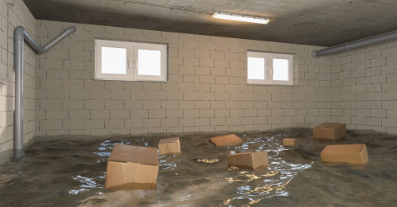Waterproofing isn’t just a buzzword in home maintenance—it’s a critical defense line against the subtle but devastating force of water. Whether you live in a rainy region, have a high water table, or just want to safeguard your investment, waterproofing your basement is a non-negotiable part of responsible homeownership.
So, what exactly is Interior Basement Waterproofing? At its core, it’s the process of making a structure resistant to water ingress. In the context of basements, it means creating a barrier—whether from the inside or outside—that prevents water from entering the space. Left unchecked, moisture in your basement can lead to mold growth, a musty smell, peeling paint, rotting wood, and even compromise your foundation’s integrity.
Internal vs. external basement waterproofing: What’s the difference?
Let’s break down the two main waterproofing approaches: internal and external.
External waterproofing is essentially a preventive measure. It involves excavation around the home’s perimeter to expose the foundation walls. Contractors apply a waterproof membrane, install drainage panels, and often add a weeping tile system that channels water away from the foundation. It’s highly effective but also intrusive, time-consuming, and costly—especially in urban areas or tightly packed lots.
Internal waterproofing , on the other hand, tackles the problem from the inside. Rather than stopping water before it enters, this method manages it once it does. Techniques vary, but generally include sealing interior cracks, installing vapor barriers, and creating an interior drainage system connected to a sump pump. This approach is especially effective for dealing with hydrostatic pressure and persistent leaks—and is often the preferred solution when external excavation isn’t feasible.
The hidden benefits of internal basement waterproofing
While external methods often steal the spotlight, internal waterproofing comes with a list of underrated advantages that make it a smart choice for many homeowners.
First and foremost, it’s budget-friendly . Excavation can cost tens of thousands of dollars, especially if you need to move landscaping, fences, or even parts of the driveway. In contrast, internal systems can often be installed at a fraction of the price.
Second, installation is quick and minimally invasive . Most internal waterproofing systems can be set up in a matter of days, without turning your yard into a construction zone. No heavy machinery. No angry neighbors. Just results.
Third, internal waterproofing systems are easier to inspect and maintain . If something goes wrong with an exterior drain, finding and fixing it can involve re-digging. Internal systems are accessible—right there in your basement.
Moreover, the technology behind internal solutions has come a long way. Many systems now include alarms, battery backups, and smart monitoring tools that keep your basement dry even during power outages or heavy storms.
No waterproofing? The risks you’re taking
Choosing to ignore waterproofing is, in many ways, choosing to gamble with your home’s future. Without protection, your basement becomes vulnerable to a host of problems, many of which extend beyond water itself.
Visit our site for more information click here!
One of the main concerns is mold. Mold spores proliferate in damp conditions and spread quickly once established. Respiratory problems have been associated with mold exposure, particularly in youngsters and the elderly.
Structural deterioration is another serious concern. Over time, persistent moisture can degrade concrete, corrode the steel reinforcement within it, and compromise the foundation’s ability to bear weight. What starts as a minor hairline crack might gradually expand into a much larger fracture, potentially jeopardizing the structural safety of the entire house. Exploring the Interior Basement Waterproofing Benefits can provide insight into how interior solutions help manage these risks before they escalate.
Financially , it’s a ticking time bomb. Water damage is one of the leading causes of insurance claims. But here’s the catch: many home insurance policies don’t cover gradual seepage or flooding due to poor maintenance.
And if you plan on selling your house? A history of basement water problems can knock tens of thousands off your asking price.
How to keep your basement dry (without major renovations)
Not every home needs a complete waterproofing overhaul. In fact, there are simple, proactive steps you can take right now to reduce your risk:
- Check your grading . Your yard should slope away from the house. If it doesn’t, consider adding soil or regrading.
- Clean gutters and extend downspouts . Ensure water from your roof is being carried far from the foundation.
- Seal visible cracks . Small cracks in the floor or walls can be sealed with epoxy or polyurethane foam.
- Use a dehumidifier . Keeping indoor humidity levels below 50% can discourage mold growth.
These measures won’t replace full waterproofing systems, but they do offer an effective first line of defense.
A dry basement is a healthy, safe, and valuable part of your home. Whether you’re opting for an external system or exploring the many benefits of interior solutions, one thing is clear—ignoring waterproofing is not an option.



